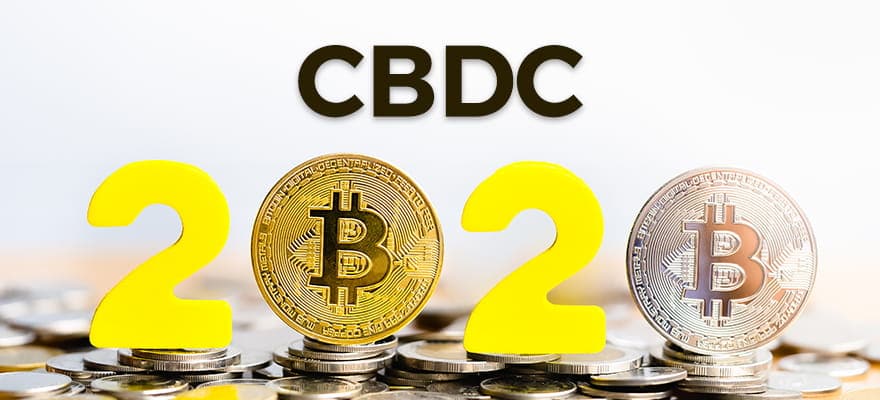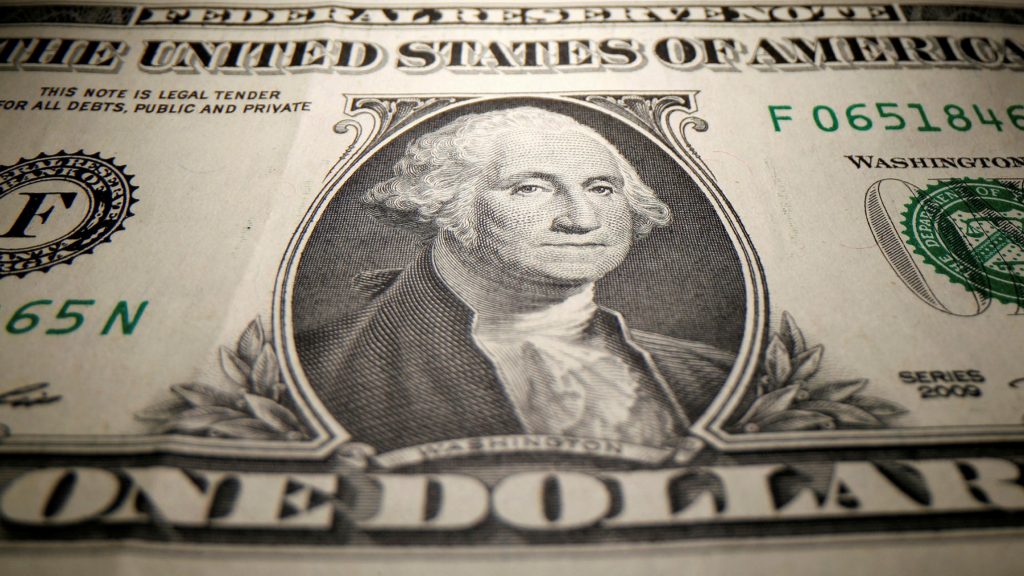
Cryptocurrencies have become increasingly commonplace over the past few years. Ever since Bitcoin’s dramatic price rally during late 2017, the notion of crypto and digital currency has become widespread all over the world. However, the cryptocurrency sector is not the only example of digital currency. Central banks are waking up to some of the advantages offered by cryptocurrency and are instead looking into the Central Bank Digital Currency (CBDC) field. So far, traditional central banks have printed physical fiat currencies, and banks have provided financial services to consumers.
However, the advent of cryptocurrencies threatens to upend this traditional notion of both currencies and financial services. On the one hand, cryptocurrencies such as Bitcoin allow for virtually immediate international transfers of funds, which is far faster than traditional financial transactions and available at a fraction of the cost. Moreover, the oft-cited decentralized finance (DeFi) field is full of innovations, providing a plethora of intermediary-free financial services that could one day even be banking the unbanked with decentralized finance. In extension, a combination of cryptocurrency, DeFi, and blockchain technology could even render banks redundant.
As such, some central banks are exploring the premise of Central Bank Digital Currency (CBDC) in order to stay relevant. So, without any further ado, let us go down into the CBDC rabbit hole and get an answer to the question “what is CBDC”. First of all, however, you should be sure to check out the blockchain courses available on Ivan on Tech Academy to get some background. The blockchain space is hotter than ever, and you can join over 20,000 students at Ivan on Tech Academy to supercharge your blockchain education!
What is CBDC?
So, what is CBDC? As the name suggests, a CBDC, or Central Bank Digital Currency, is a digital currency that originates from a central bank. Put as simply as possible, a CBDC is a digital representation or form of a fiat currency. Consequently, a CBDC could be understood as “a central bank’s cryptocurrency”, although that is a sweeping simplification.

The idea of a Central Bank Digital Currency, or CBDC, is nothing new. In fact, central banks all over the world have been exploring the possibility of introducing digital equivalents to traditional fiat currencies for years. However, this process has, in many cases, been excruciatingly slow. Central banks have been reluctant to eschew paper fiat currency, which is tangible, and the global CBDC efforts have subsequently been tepid.
However, CBDCs come with some genuine advantages, which is why central banks are now looking into them. We have previously discussed how decentralized finance could potentially “bank the unbanked”, and the same is, to no small extent, true for CBDCs. Additionally, greater CBDC adoption could also make global transactions quicker, and more resilient, much like cryptocurrencies have already done. A CBDC would also likely face far easier regulation than cryptocurrencies, as it can be seen as an “official” representation of a fiat currency.

Some countries, like China, are already doing trials with a CBDC, with a digital version of the renminbi, an “e-RMB”. Consequently, it is becoming clear that central banks around the world, along with governments, are waking up to the potential advantages of digital currency. Nevertheless, before exploring the premise of digital currency issued by central banks, let us first consider money and what money, or currency, really is.
Monetary Definition
In order to fully understand the allure of a CBDC, let us first look at the monetary definition. What is a currency, or money, really? The monetary definition, or the definition of money, is often said to be an economic unit of value, which functions as a widely recognized medium of exchange. As such, there are no special requirements put on how money should take its form – it should just be a recognized medium of exchange that people believe hold value. This monetary definition often coincides with the notion of scarcity in order to convince people that a particular asset indeed holds value. Consequently, we’ve seen a wide variety of different currencies and mediums of exchange throughout history.

Even today, different fiat currencies vary wildly in shapes and sizes. The only common denominator for an asset to efficiently act as a functional currency and hold value is that people need to trust that it retains its value, i.e., people need to have a shared belief that a currency is, indeed, valuable. This is basic market economics and also ties into the notion of scarcity. Historically, people have used precious metals, gems, and even seashells as different types of mediums of exchange, or de facto money, meaning currencies can take nearly any form. Nevertheless, removing scarcity from the equation often undermines trust in an asset.
Real-life examples of this can be readily observed throughout history. Instances of excessive printing of paper bills by central banks often lead to inflation or even hyperinflation, where the value of a certain currency drops or plummets. The diminishing scarcity has a psychological effect that lessens people’s trust in the currency, subsequently driving prices up as the risk of holding the currency grows greater. This monetary definition becomes important when exploring CBDCs.
Currency Characteristics
In addition to the sweeping monetary definition previously discussed, there are also some basic characteristics of what constitutes currencies. Although these partly overlap with the aforementioned monetary definition, they can nonetheless help discuss the premise of Central Bank Digital Currency (CBDC). So, some of the key currency characteristics are the following:
- Fungible
- Recognizable
- Flexible
- Durable
- Stable
Fungible
The notion of fungibility is an important one when it comes to currency. Specifically, the different units of the medium of exchange should be relatively uniform. This is important in order for the value of the assets to stay relatively constant over time and for users to gauge the value of the medium of exchange quickly. If the currency was instead made up of non-fungible goods, each unit of currency would need to be evaluated to decide the true “value” of the currency.
However, the currency’s medium of exchange units do not need to be perfectly unique – much like paper bills often have a unique serial number for identifying the bills. Nevertheless, they do need to be alike enough that users can have trust in them and identify them. This leads us onto the next characteristic of currency:
Recognizable
A currency needs to be recognizable for users, in order for the parties to settle and agree on the terms easily – and value – of a transaction. What’s more, the recognizability of a currency is also related to examining the authenticity of a currency. If the currency or asset used is non-recognizable, then the transaction costs will rise due to the currency’s uncertainty and perceived risk. The fact that the US dollar has long been hailed as a “global reserve currency” is mainly due to the fact that every country recognizes the US dollar as a valuable medium of exchange.

Flexible
Moreover, a currency needs to be flexible both in the aspect of being divisible, but also highly mobile. In fact, the entire transition from a barter economy to the advent of currencies was primarily motivated by the need for more flexible mediums of exchange. A cow, for example, is indivisible – so bartering a cow for a chicken presents real issues and substantial transaction costs. Currency, on the other hand, can be more readily divided, using coins and paper bills.
Furthermore, a barter economy would also involve the physical transfer of these assets. Transferring coins and bills using currency is undoubtedly easier than physically transferring a cow, but this also has its limitations. Even traditional online wire transfers struggle with long processing times and cumbersome steps for transferring across national boundaries. This is why many institutions are already looking to digital alternatives, namely cryptocurrency, for quick and low-cost transfers of funds.
Durable
Durability is another key aspect of a successful currency. Specifically, a currency has to be durable in order to retain its perceived value, but also durable enough to be reused.

Traditional physical currencies, such as paper bills and coins, need to be physically durable in that they need to withstand the age of time and trade hands many times without losing their physical form. If a currency is non-durable, it will reflect in a declining value as the units of currency get older. This leads us onto the final point, stability.
Stable
A currency also needs to be reasonably stable. Although practically all currencies fluctuate somewhat, a currency’s value of time needs to be stable enough to attract users and potential investors. For example, a currency that is decidedly non-durable and which noticeably and consistently declines in value compared to other alternatives will likely not attract new users. Those criticizing cryptocurrencies often point out the relative volatility in, for example, the price of Bitcoin. However, they fail to appreciate that the long-term trend Bitcoin’s price is decidedly positive, vastly outpacing traditional currencies and assets. This is why the crypto market continues to draw new users.
As such, these characteristics will, to some extent, carry over to any CBDC. Many of them are easy to accomplish in a digital setting. For example, flexibility and fungibility can actually be improved in digital goods, such as in a CBDC. Additionally, durability also becomes easier with digital currency, seeing as there is no physical wear and tear on the currency. Rather, digital currency only consists of lines of code and can therefore be exchanged time and time again.

Consequently, digital currencies only need to be successful in becoming recognized – something that Bitcoin has already proven is possible – and remaining stable enough to attract users. Granted, digital currencies will likely not be perceived as superior to traditional currencies by all people due to their intangibility. The fact that digital currency is only virtual or digital and lacks a physical form is one of the major sources of caution for central banks. For example, a catastrophic geomagnetic storm could potentially render such systems inaccessible and inoperable. At the same time, however, the same criticism is equally true for any digital service, and arguably shouldn’t be allowed to hamper the pace of innovation.
CBDC Advantages and Disadvantages
A Central Bank Digital Currency, or CBDC, could offer a lot of advantages over traditional fiat currency. This is why central banks around the world are actively exploring CBDCs. For example, a CBDC could lower the cost of managing cash dramatically. Moreover, it could potentially boost financial inclusion, similarly to what DeFi and cryptocurrencies are already doing. A CBDC could also further accelerate the adoption of blockchain technology and give validity to the digital currency and cryptocurrency sector.

Nevertheless, one also needs to look at potential drawbacks of a CBDC. First of all, a CBDC would likely give more power to existing banks. What’s more, some parts of the crypto community are somewhat suspicious of CBDC introductions due to the fact that central banks are behind them. Consequently, CBDCs generally do not share the overarching goal of cryptocurrencies such as Bitcoin to cut out the middleman, e.g. banks. Instead, central banks are the driving force behind the CBDC revolution. This presents an obvious clash of ideologies between cryptocurrency and CBDC.
Nevertheless, digital currencies – whether they are in the form of cryptocurrency or CBDC – are interesting in that they are using distributed ledger technology (DLT), bringing the power of blockchain to financial systems. Although some will likely argue that CBDCs do not go far enough – in that they don’t go as far as cryptocurrencies in eschewing the traditional financial sector – others would say they are an important improvement over physical fiat currency.
At the end of the day, only time will tell whether CBDCs will truly become commonplace. However, you can start learning more about crypto and blockchain technology right now, by enrolling in Ivan on Tech Academy. Join the go-to blockchain academy today – and get 20% off by using our exclusive promo code BLOG20!





